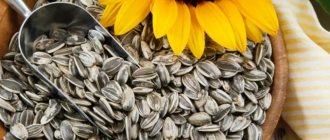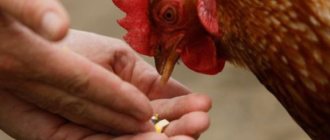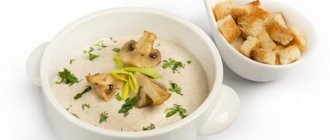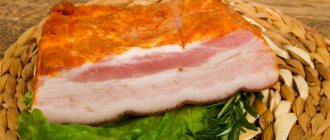Garlic is a healthy but heavy food. Therefore, many parents do not know whether it is possible to give it to their children. Let's be clear. The burning plant contains trace elements, B vitamins, vitamins A, C, D, phosphoric acid, phytosterols and phytoncides. This is a natural antibiotic, has bactericidal properties, but does not harm the intestinal microflora.
Photo: depositphotos.com. Author: aldegonde.
Benefit
- Strengthens the immune system. Therefore, first of all, its properties are used to prevent viral colds. If your child does get sick, take him to the doctor rather than feed him garlic in the hope of a quick cure.
- Can be used as an antiscorbutic in combination with other beneficial products.
- Suitable for children who eat poorly, as it stimulates appetite.
Traditional medicine uses garlic to treat:
- tuberculosis;
- ulcers and suppurations;
- fever;
- rickets.
The product is also used to get rid of parasites.
There are many recipes for treating various diseases with garlic. But many of them are not suitable for a child’s body and can do more harm than good. It is important to know when to stop.
The vegetable has the following properties:
- antibacterial;
- anthelmintic;
- antiscorbutic;
- immunostimulating;
- disinfectants;
- antioxidant;
- antiviral;
- anti-inflammatory.
Garlic is a healthy, wholesome food that can and should be included in a child’s diet, but not a medicine.
Benefits of garlic
Thanks to this composition, garlic has great benefits for the body:
- it has bactericidal properties, kills germs and bacteria without harming healthy organs and systems;
- the root vegetable strengthens the immune system, which is why it must be consumed during seasonal epidemics;
- garlic increases appetite;
- it helps get rid of parasites in the body;
- garlic helps cure tuberculosis, ulcers, fever, rickets. Of course, it is used as an auxiliary, and not the main method of treatment.
You should not overestimate the possibilities of treating and preventing diseases with the help of garlic, because the concentration of beneficial substances in a couple of cloves is not so high, and consuming it in large quantities will not only not be beneficial, but may even be dangerous.
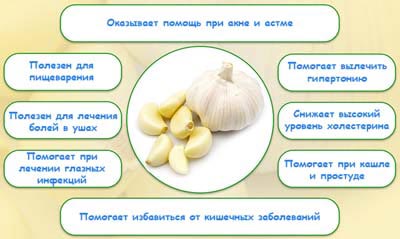
How to use garlic
Almost every mother knows that garlic helps fight adverse cold symptoms. That is why parents want to introduce this aromatic vegetable into their children’s diet early. However, pediatricians advise parents not to rush. Fragrant garlic cloves contain a whole complex of mineral components, namely:
- sodium;
- calcium;
- potassium;
- sulfur.
These substances actively participate in cellular processes. Thus, they support the normal functioning of almost all organs in the body. The child’s body has special needs for some of the components. Garlic pulp also contains unique specific substances - phytoncides. The peculiarity of the action of these components is that they help the body fight various pathogenic microbes. Phytoncides help protect the body from various airborne infections.
Garlic is also rich in specific components that can affect the immune system. The immune system works intensively during the season of colds and acute respiratory infections. If immunity is reduced for some reason, this significantly increases the possible risk of contracting such diseases. Garlic is one of the foods that have a rather gentle effect on the immune system, causing it to start working somewhat more intensely.
The aromatic garlic mass also contains many extractive substances. They are what determine the specific taste of the vegetable. The more of these components are contained, the more pungent the garlic cloves taste. Fresh garlic contains quite a lot of such substances. During heat treatment, some of the extractive substances disappear, which contributes to the fact that the taste of boiled or fried garlic is, as a rule, somewhat softer than fresh.
We suggest you read: Is it possible to have garlic while breastfeeding?
The aromatic pulp also contains flavonoids, as well as a complex of organic acids. These substances can affect the digestive system. All parents, but especially those with infants, should remember this. Digestion in a baby of the first year has a number of features. Thus, the mucous membranes of the digestive organs of a child are very delicate and easily wounded.
Garlic pulp contains quite a lot of extractive substances, which can, if they get on the mucous membranes, lead to their irritation. That is why pediatricians recommend not immediately introducing fresh garlic into the diet of children. Initially, it is better to introduce this vegetable into the menu only after it has “passed” heat treatment. The vegetable is rich in substances that can have a strong effect on the excretion of bile. This effect helps to activate the digestive processes. Regular removal of bile from the gallbladder also helps reduce the risk of developing a number of diseases that are accompanied by stagnation of bile secretion.
Fresh garlic cloves, like green garlic, are rich in natural vitamin C. This component plays an important role in the prevention of various infectious diseases. The maximum ascorbic acid is found in fresh vegetables that have recently been dug out of the ground. Garlic cloves also contain components that have an anti-inflammatory effect. It is no coincidence that this vegetable is used to prepare many folk remedies that are used for inflammation. The use of such natural medicines helps combat the adverse symptoms of many diseases of both internal organs and the musculoskeletal system.
Harm
- Heavy food, and the gastrointestinal tract of babies is simply not ready for it. Therefore, garlic should not be given to infants under any circumstances.
- An “evil” product that irritates the mucous membranes. It is contraindicated for children with gastritis and other gastrointestinal diseases. Children's mucous membranes are very sensitive, and fresh vegetables can cause discomfort and even pain during chewing.
- Allergy and individual tolerance.
The child may simply not like the taste. If parents try to force garlic into it, it will not bring any benefit. This will cause stress in the baby and cause nausea or vomiting. The logical result: the child will hate garlic and will not eat it, even when he grows up.
Harm of garlic
First of all, garlic is a heavy, aggressive, scalding product for which the baby’s digestion is not yet ready. It irritates the child’s sensitive mucous membranes, causing discomfort and even pain when chewing. Toxic substances in the composition corrode the walls of the stomach, disrupt the functioning of digestion, kidneys and liver.
Excessive consumption of this product leads to indigestion, heartburn and bowel dysfunction. In addition, it may cause an allergic reaction. As a result, the baby develops skin itching, irritation and rashes, blood pressure drops and health worsens, the airways and tissues swell, and it becomes difficult for the child to breathe. In especially sensitive children, even inhaling garlic fumes or getting garlic juice on clothes can cause an allergy.

Garlic should not be consumed by young children, people with gastritis and ulcers, or with various diseases of the kidneys, liver and digestion. The product should not be eaten at a high body temperature above +38 degrees. It is prohibited for allergies and individual intolerances, for epilepsy and is undesirable for excess weight.
If you have a cold, you can give garlic only if there is no fever. At the same time, it should complement treatment, and not be the only drug. Treatment must be prescribed by a doctor! How to treat ARVI and colds if your baby is sick, see here. And then we will find out at what age children can be given garlic.
At what age should it be given?
- Fresh garlic is generally contraindicated for children. If the baby is healthy and has no digestive problems, he can be given garlic from 8-9 months, but only after heat treatment and in combination with other products. For example, as part of vegetable purees or soups. In this case, the child should not receive more than 1 clove per day.
- Fresh vegetables are given to children from 3-4 years old, but also no more than 1 clove per day. At this age, many kids like to eat garlic “as a bite” with black bread. If you are worried about your child's stomach, simply rub a clove of garlic onto the bread crust. In crushed form, the product can be served on the children's table in salads and soups or sprinkled on meat. Garlic is also added to various snacks: cheese, egg, carrot.
- Children over 10 years old, like adults, are allowed to give more than 3-4 cloves of garlic per day. But it is better not to exceed the upper limit (5-6 slices). This is a rather aggressive food, and excessive consumption can lead to stomach pain and heartburn.
When can you give your child garlic?
Garlic should not be given to small children, including newborns. If the baby is healthy, does not have problems with excess weight and digestion, and does not suffer from allergies, you can try this product at 9-10 months. Garlic is given only after heat treatment, in combination with other foods and in quantities of no more than one clove at a time!
For a 1 year old child, you can add garlic to soup or vegetable puree. Start your first garlic feeding with half a clove. Observe the baby’s reaction; if your one-year-old baby feels well, you can increase the dosage to a whole slice and add the hot ingredient to dishes no more than twice a week. If your baby shows symptoms of a food allergy, remove the product from the diet and consult a doctor.
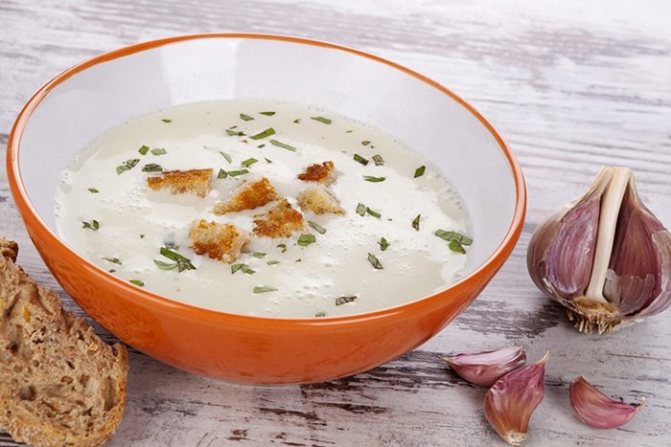
Fresh garlic can be consumed by children only from three to four years old in the amount of one clove per day. By the age of ten, the norm is gradually increased to three to four slices per day. In this case, the top bar is five to six slices. But even in this amount, heartburn and digestive disorders may already appear.
What does Komarovsky say?
The pediatrician and author of popular books for parents has his own point of view regarding the benefits of garlic and onions. Dr. Komarovsky has repeatedly noted in his speeches that the health of a child largely depends on the psychological state of relatives. That is why it is useful to give “vigorous” vegetables to children for preventive purposes and at the same time to calm the nervous system of grandmothers and mothers. Komarovsky notes: for prevention during the cold season, it is useful to spread garlic around the room, but so that the smell is practically not felt. But if an illness occurs, there will be no particular benefit from eating onions and garlic.
Composition and beneficial properties
This product contains B vitamins, vitamin A, C and D, various minerals and nutrients. The benefit of garlic is that it has antibacterial, disinfectant, anthelmintic, antiviral and anti-inflammatory effects. This is a unique natural antioxidant and antibiotic. It performs the following beneficial properties and functions in the body:
- Strengthens the immune system, is an excellent prevention of influenza, ARVI and other colds;
- Increases and improves appetite;
- Stimulates and normalizes blood circulation, relaxes and cleanses blood vessels;
- Lowers the level of bad cholesterol in the blood;
- Rids the body of parasites. Eliminates harmful bacteria and toxins, fungus, staphylococcus, dysentery and diphtheria bacillus;
- Used in the treatment of ulcers and suppurations, garlic juice eliminates skin inflammation and rashes, warts, itching from insect bites;
- Helps in the treatment of rickets and tuberculosis;
- It is a natural antibiotic and does not inhibit the intestinal microflora, like medications;
- Helps in eliminating cough, runny nose and other cold symptoms;
- Accelerates recovery and prevents complications after the flu;
- Prevention of heart attack, blood clots and cancer.
Garlic is beneficial for both children and adults. By the way, a nursing mother can eat this product in small quantities after the third or fourth month of lactation. However, it is important to follow the measures and dosage. It is recommended to add garlic to dishes rather than eat it separately.
Many people mistakenly think that onions and garlic can change the taste of breast milk. However, this is only possible if you eat a very large amount of such foods. Garlic actually leaves an unpleasant odor in the mouth. However, it can be easily eliminated by eating parsley. For more information about the composition, benefits and rules for using this product while breastfeeding, read the article “Can nursing mothers eat garlic.”
“Necklace” and other bad advice
Some mothers like to “scent” their living rooms with crushed garlic.
Others make necklaces from the odorous cloves to protect fidgets from infections in public places. Still others follow another harmful piece of advice: puncture a plastic Kinder Surprise egg, put a crushed slice in it and give it to the child to take to school.
But such decorations often cause ridicule from peers. You also need to think about those around you: few people like the garlic smell. What if not only classmates, but also teachers make comments about the “aroma” to the child? He will experience stress, ruin relationships with other people, and may even get sick due to his worries.
Do not do it:
- give your child garlic with you;
- rub his hands and neck before going to school;
- feed garlic before classes.
If you want to somehow protect your child, rub him with bactericidal aromatic oils: spruce, orange, bergamot, grapefruit, tea tree, juniper (after checking for allergies). As a rule, they have pleasant aromas that do not cause rejection among others.
Timely hand washing and regular use of safe disinfectants will help protect against seasonal infections.
Do not rush to rub your child’s skin with garlic juice for sprains, fever and muscle pain. This can lead to burning, dryness and irritation, essentially a chemical burn to the covering tissue.
Do not force chewing of a burning product and do not rub the area under the nose with a garlic clove when a child has a cough or runny nose. The mucous membranes and skin during ARVI are already severely irritated. Why traumatize them even more?
Treatment secrets
There are many folk recipes for treating garlic, including those suitable for children. But do not overestimate the capabilities of this burning product and try to follow the course of treatment prescribed by the doctor.
- For colds and bronchitis. Dip a clove of garlic in honey and let your sick child chew this snack.
- With a runny nose. Grind a couple of cloves, wrap it in a clean handkerchief, bring it to the baby’s nose and let it breathe a little of the pungent aroma. An alternative is a few drops of essential oil of any coniferous plant, tea tree or orange.
- Nasal drops. Mix garlic juice with beet juice in a 1:1 ratio. Place 2 drops into each nostril. But keep in mind: regular nasal drops are more effective and do not irritate inflamed tissues. If you are determined to treat your child exclusively with natural remedies, you can drip the sap of a living or “coin” tree.
- When coughing. The combination of medicinal herbs with garlic juice is useful for bronchitis and other ailments accompanied by cough. For example, a decoction of chamomile, mint and garlic alleviates a child’s condition with colds and flu, increases sweating and speeds up recovery.
- Inhalations. Chop the garlic and pour into a saucepan, pour boiling water over it. The child should breathe the resulting garlic steam for about 10 minutes until the water cools down. This recipe helps remove phlegm and softens cough. A similar effect can be achieved using other types of inhalations: with mint, potato peelings or pine oil.
- From parasites. Hippocrates recommended using garlic against intestinal parasites. To get rid of worms, the cloves can be eaten whole, boiled in milk, or infused in water or alcohol. It is enough for a child to eat a few cloves of garlic several times a week to reduce the risk of parasites infecting the growing body.
Pharmacy drugs
Almost every pharmacy sells medicines and dietary supplements with garlic extract. Pure garlic extract is sold in capsules, as an oil or alcohol infusion. It has the following properties:
- antibacterial;
- antifungal;
- expectorant;
- cardiotonic;
- antiprotozoal (against diseases caused by protozoa);
- intestinal tonic;
- anthelmintic.
For children, garlic extract is usually prescribed for respiratory diseases. The drug can cause allergies, and it does not have a very pleasant taste, so the liquid form is not suitable for a child - it is better to buy capsules.
Delicious recipes
And yet, children should be given garlic, because it is a healthy product that improves the taste of many dishes, really helps strengthen the immune system, and at the same time serves as a preventive measure against parasites.
What dishes should I add garlic to? In soups and vegetable purees, in meat. Many children refuse food if they see pieces of onion or garlic in it. It is better to use the juice of these plants.
Cheese snack
Contrary to what adults think, some kids willingly eat spicy snacks. You can make sandwiches with garlic.
Ingredients:
- 150 g hard cheese;
- 2 tbsp. l. sour cream;
- 2 cloves of garlic.
Method of preparation: finely grate cheese and garlic, season with sour cream and stir.
The paste can be eaten alone or spread on bread.
Vegetable salad
A simple vegetable salad will acquire a bright taste if you squeeze a little garlic juice into it.
Ingredients:
- 1 tomato;
- 1 cucumber;
- 1 bell pepper;
- olive oil;
- 100 g feta cheese;
- 1 clove of garlic.
Method of preparation: cut vegetables, season with oil and garlic juice.
Kids eat this salad with pleasure - it does not contain onions, which they usually do not like. In addition, this is a very beautiful dish thanks to the wide color palette of ingredients.
How to cook dishes with garlic for children
At first, garlic must be subjected to mandatory heat treatment and mixed with other components of the dish. Add the product in crushed form a few minutes before the end of preparing the soup or puree. You can add garlic to the minced meat to prepare cutlets, dumplings, meatballs and other similar preparations.
Garlic is used to prepare appetizers, sauces, dressings and gravy. It goes well with vegetable oil and sour cream, cheese, beans and other legumes, beets and carrots, tomatoes and eggplants, and bell peppers. However, be careful, many components can only be given to a child after two or three years. You will find the procedure for introducing vegetables in the article on introducing vegetable complementary foods.
Garlic is not recommended for cooking fish, cabbage and cucumbers. Do not prepare too spicy dishes for children, do not add large amounts of herbs and spices! Many children really like garlic snack, which can be used as a filling for tomatoes, eggs, eggplants, or spread on black bread and make delicious toast.
To prepare this garlic butter, take two cloves of garlic, 150 grams of hard cheese and two spoons of sour cream. Grate the cheese and garlic on a fine grater, mix with sour cream and the appetizer is ready! It is perfect for the diet of children over three years old.
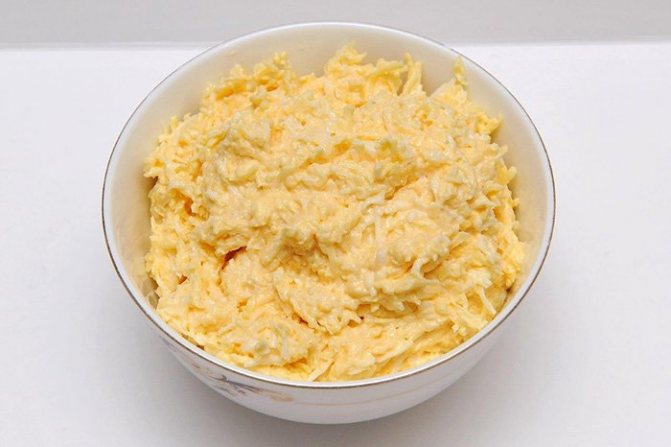
Plus, you can make a delicious and easy salad dressing. Take three leaves of basil and two cloves of garlic, chop the ingredients and mix with olive or sunflower oil, lightly salt and pepper. This dressing can be used for any summer vegetable salad. You will find many interesting and healthy salad recipes for children at the link.
Allergy to garlic
Garlic can cause allergies - it contains components that are difficult for the body to tolerate. Frequent symptoms:
- rashes on the face and body;
- swelling of tissues and airways;
- skin itching;
- labored breathing;
- low pressure;
- anaphylactic shock.
In especially sensitive children, allergies can be caused not only by eating garlic, but even by inhaling its vapors or getting its juice on the skin. At the first symptoms, it is necessary to ventilate the room and wash off the garlic juice from all surfaces. Be sure to rid the child's body of the allergen by inducing vomiting or giving him activated charcoal. If symptoms are severe, you should call a doctor. He will prescribe an antihistamine and advise what to do next.
Worthy replacement
Does your child have a garlic allergy and want a natural alternative with similar healing properties? Choose.
- To increase your appetite, use sour apples, fruit juice, and cucumbers.
- To strengthen the immune system, any fruits, vegetables, as well as echinacea tincture are suitable.
- To disinfect the air, use essential oils to which the child responds well, and ventilate the children's room more often.
- You can clean household items touched by a sick person from bacteria using a saline or soda solution.
- To remove parasites from the body, use pharmaceutical preparations after consulting with your doctor.
How to choose and where to store?
- Many housewives prefer to purchase garlic as needed rather than storing huge bunches at home. Buy large, clean, firm garlic heads with dry, intact skins.
- You can store garlic in sterile jars, nets, baskets or containers with holes for ventilation.
- It is advisable to use a well-ventilated room for these purposes, rather than a tightly locked cabinet.
- In this case, the storage temperature should be within 4-10 °C.
Is it possible to give lemons to small children?




